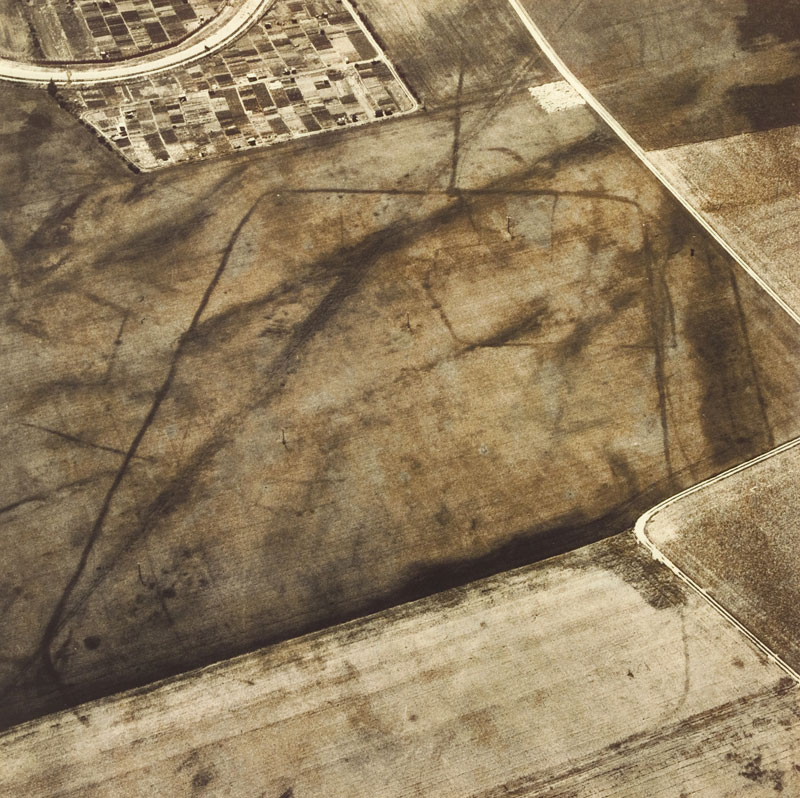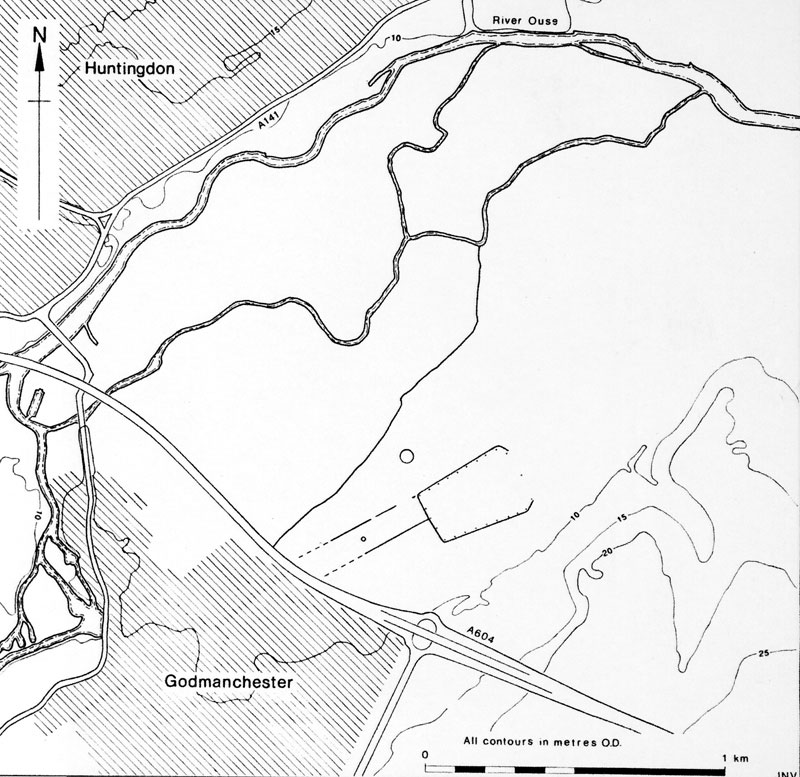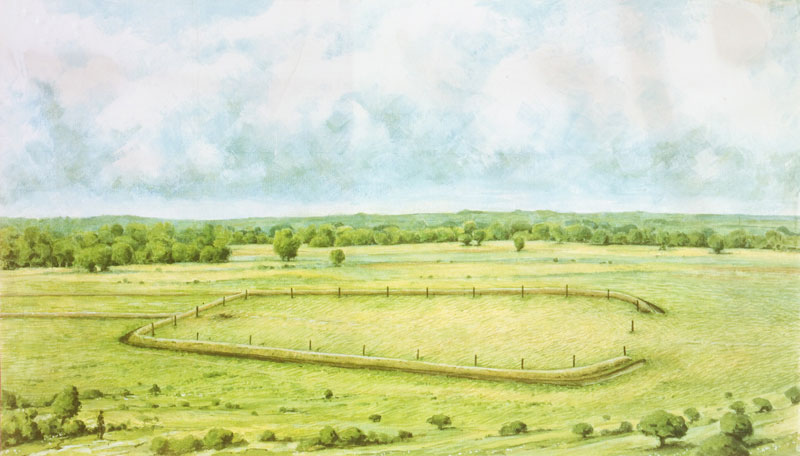The first evidence of human activity seen in the archaeological record can be placed in the fourth millennium BC, the earlier part of the era known as Neolithic. This is regarded as a long period of transition between the Mesolithic, when people relied upon hunting and gathering food as a source of sustenance, and the Bronze Age, when we can recognise the settled agricultural communities.. This change in subsistence strategy was also accompanied by new technologies, particularly the introduction of pottery. It is during this Neolithic period that man made a significant impact on the landscape with major forest clearance and the construction, for the first time, of sizable monuments, including the ceremonial centre at Godmanchester. This startling discovery remains unique. There are many occurrences, both in Britain and Western Europe, which would have been contemporary with it:- earthen long tombs; ‘causewayed enclosures’ formed from concentric ditches and the long avenues known as ‘cursus’, but there is, as yet, nothing to compare with the scale and form of the construction uncovered.
Click images to enlarge
 The Neolithic monuments were discovered from this aerial photograph held in Cambridge University. The dark lines, known as crop marks, mark the position of the underlying prehistoric ditches. The fills of these ditches contain a more organic material, and retain more moisture, than the undisturbed gravel. In dry weather the crop over the ditches will remain green whilst surrounding stems ripen earlier and turn yellow, creating the lines so clearly visible from the air.
The Neolithic monuments were discovered from this aerial photograph held in Cambridge University. The dark lines, known as crop marks, mark the position of the underlying prehistoric ditches. The fills of these ditches contain a more organic material, and retain more moisture, than the undisturbed gravel. In dry weather the crop over the ditches will remain green whilst surrounding stems ripen earlier and turn yellow, creating the lines so clearly visible from the air.
 This plan shows the relationship between:- ceremonial centre and cursus; the physical features in the landscape and the later towns We can see the Neolithic monument lie close to the river, a common location for them, and their orientation did not respect the natural lie of the land, which is formed by the hills to the east and the small stream to the west. The parallel ditches which define the long processional way, known as the cursus have been traced as far as the A14 (A604 on plan).
This plan shows the relationship between:- ceremonial centre and cursus; the physical features in the landscape and the later towns We can see the Neolithic monument lie close to the river, a common location for them, and their orientation did not respect the natural lie of the land, which is formed by the hills to the east and the small stream to the west. The parallel ditches which define the long processional way, known as the cursus have been traced as far as the A14 (A604 on plan).
 This is a reconstruction of the ‘ceremonial centre’. It was 340m long, enclosed an area of 63,000 sq metres and had an entrance 180m wide at the north-east end. 24 large oak posts, each 60cm diameter, were arranged symmetrically within the 4m wide enclosing ditch and bank. The chronology has been established by the radiocarbon (C14) dating of charcoal from the posts. The ceremonial centre was in use around 1200 years before the erection of the earliest Egyptian pyramids, 1000 years before the construction of the first Stonehenge and nearly 4000 years before the Roman occupation of Britain.
This is a reconstruction of the ‘ceremonial centre’. It was 340m long, enclosed an area of 63,000 sq metres and had an entrance 180m wide at the north-east end. 24 large oak posts, each 60cm diameter, were arranged symmetrically within the 4m wide enclosing ditch and bank. The chronology has been established by the radiocarbon (C14) dating of charcoal from the posts. The ceremonial centre was in use around 1200 years before the erection of the earliest Egyptian pyramids, 1000 years before the construction of the first Stonehenge and nearly 4000 years before the Roman occupation of Britain.
Images and text courtousy English Heritage.